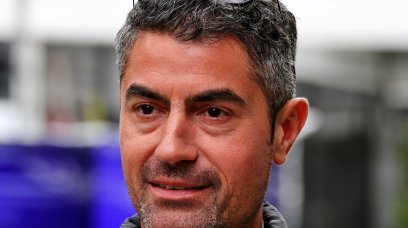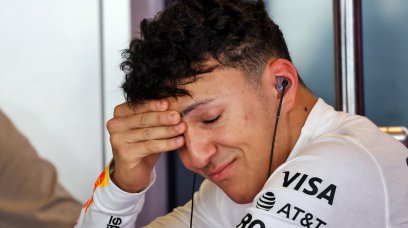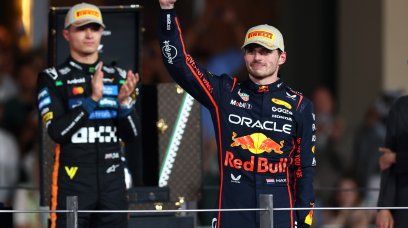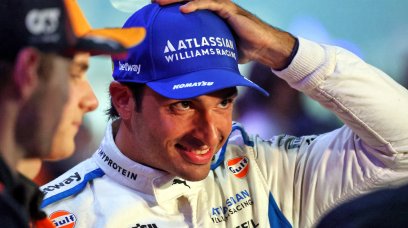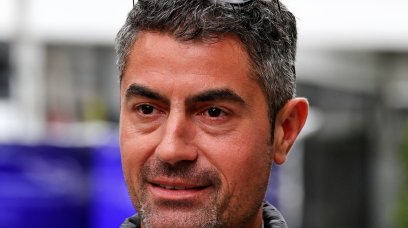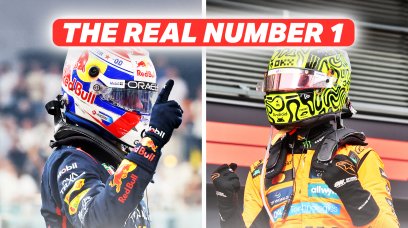Itwould be all too easy to suggest that Mercedes are in a very bad way,but that is to overlook that, on performance, they are certainly wellahead of engine peers McLaren, Aston Martin, and Williams – and thatadvantage cannot all be down to the two drivers Lewis Hamilton andGeorge Russell, undeniably gifted as they are. However, by the usualstandards of the Silver Arrows, the team's start to 2022 has beendisastrous. Itwould be just as easy to suggest that the deficit in performance isonly due to the Mercedes powertrain falling short of the Ferrari,Honda (design), and even Renault equivalents, but forget not thatMercedes have run ahead of various cars powered by those 'other' power units, so their own three-pointed star versions cannot becatastrophically short of outright grunt. Whatis, though, catastrophic is that Mercedes - and, by implication,Hamilton, shooting for a record eighth title - are well off the paceof Ferrari and Red Bull, who respectively won the first two races.Mercedes are used to racing at the sharp end, and their challenge iscurrently visibly blunted. At stake is not whether the situation isrecoverable, but whether the team can claw back the deficit and staywithin the budget cap.
Can Mercedes fix a truculent W13 to launch a title bid?
Arespected race car engineer with knowledge of the situation believes not.According to him, the W13 suffers five fundamental flaws: it ischronically overweight (by between eight and 10 kilogrammes), has a flexing chassis, the overall design is 'draggy' - in turn, meaning wing has been dialled out - fourthis that porpoising cost the team the edge they believed they had interms of downforce, and, not least disruptions within the engineoperation impact on overall performance. Hebelieves that the root cause is an inexplicably 'floppy' chassis,possibly due to attempts to save weight, which, though, backfired asthe team needed to strengthen the monocoque and added more weightthan stiffness in the process. This flexing affects the full spectrumof vehicle dynamics – further compounded by the conundrum that any 'fix' in any area is bound to add further weight and cost budget.A vicious circle… Speaking over the Saudi Arabian GP weekend, George Russell said that the big fix Mercedes need is yet to be discovered. "We're continuing to learn but, at the moment, we're making baby steps," Russell told media, including RacingNews365.com . "We need to make some leaps and bounds and we're struggling to find that silver bullet to resolve our issues. All of these cars perform best at low ride height, and we just can't get anywhere close to the height our rivals are running." Thesituation is further compounded, the race engineer says, by the $140 million dollar budget capforcing the engineering team to be selective about which areas toattack, particularly as they need a financial reserve with which todesign next year's car – all while Covid and the Ukrainesituation hike costs. The resultant squeeze has in turn sparkedinfighting as departments jockey for development funding – a typicalcorporate 'blame game' phenomenon.
Are defections to Red Bull also a factor?
Accordingto another (internal) source the situation was initially created bydisruptions and distractions caused by downsizing due to the budgetcap. Thus, engineers have either left or been redeployed on advancedengineering projects, while the October 2021 decision to split thefocus of Chief Technical Officer James Alison between the F1 team andthe Ineos Britannia America's Cup project has hardly been helpful. Theconundrum here is that Ineos boss Sir Jim Ratcliffe is an equalone-third shareholder in the team, and thus has the power to makedemands. It's a tough call: motor racing's biggest prize orsailing's most prestigious trophy. Masssenior defections from Mercedes High-Performance Powertrains - the separate engine division, of whichteam boss Toto Wolff is not a director - to Red Bull's nascent power unitoperation caused upheaval just as HPP mounted a sustained 2021 effortto retain the team's hegemony in the face of an aggressiveonslaught from Red Bull/Honda. This shifted HPP's focus just as theJapanese threw all at their last-gasp season.
A sense of complacency at the eight-time Constructors' Champions?
Thus, development of the 2022 engine for E10 fuel was disrupted, as were, crucially, preparations for the 2022-25 power unit freeze, which kicked in this year. Mercedes may not lack by much in the engine department, but it no longer has the edge it once enjoyed – which had enabled the silver/black cars to run higher downforce without sacrificing top-end speed. Just as things get draggy, the engine cannot compensate. Ourengineer source believes that eight years of successfully evolvingfundamentally basically the same car under the same engineering teaminstilled an air of complacency within the team, which was shatteredby the need to introduce a clean-sheet design within aforementionedconstraints. Plus, as Constructors' Champions, Mercedes have thelowest wind tunnel allocation under F1's aerodynamic 'ballast'regulations – which hurts. True,every team has similar budget cap constraints, but some had years ofexperience of racing with even less, while Ferrari reduceddevelopment of last year's car to devote its full resource to theF1-75 and Red Bull had little disruption in its ranks. Plus, theseteams drew on the eighties experiences of Rory Byrne and Adrian Neweyrespectively, both of whom were exposed to porpoising caused byground effects back then.
Wolff's leadership will be tested
Thebottom line is that the entire Mercedes team will find it bothoperationally and financially challenging to work their way out ofthis dilemma, with the only guarantee being that it will impact onnext year's car to some degree. The team faces a choice of 'doinga Ferrari', i.e. scrapping development on the sow's ear that isW13 to maximise spend on a silky W14 or develop the current car inthe knowledge that it will hurt 2023. Thehallmark of a great manager is not sustained success, but aninstinctive ability to lead a team out of a disastrous situation withminimum discord, yet methodically and speedily. Toto Wolff's skillsset is about to be tested to the maximum…
Most read
